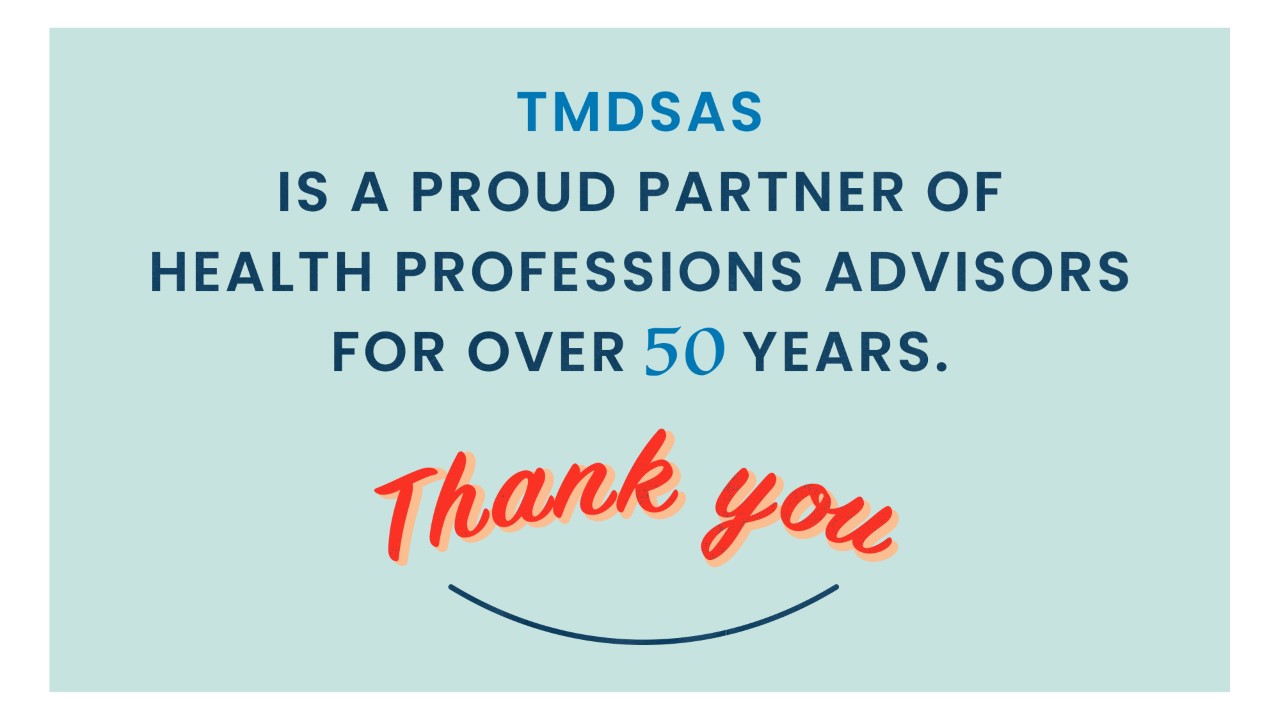How Do I Select My School Rank Preferences?
Review the guidance provided to best rank your schools, especially if you have a pre-match offer.

TMDSAS presented to the TAAHP membership at the yearly meeting in Galveston, TX on January 30, 2020. Below are the highlights of the presentation and key takeaways provided by the presenters. The presenters included:
In EY2019, TMDSAS launched its first applicant survey consisting of 56 questions covering the following topics: Communication, Application Resources, Application Usability, Application Guide and Other Resources, and Self-Identifying Questions. The purpose of the survey was to learn the ways in which TMDSAS applicants are using TMDSAS as an application service, to test our assumptions about the ways applicants interact with the various resources we provide, and to improve the sphere and efficacy of these resources.
Our analysis of the survey and other data collection efforts helped us to see the areas in which we could do more. Based on that analysis, TMDSAS is now working to do the following:
So as we start to close out EY2020, and with an eye towards the future, we are excited about the many opportunities we will have to garner feedback and the ways in which we will continue to learn.
Presented by Alanna L. Edwards, Operations Coordinator
With TMDSAS' focus on how we use data to inform our practice, here is how we used feedback to transform our communications and application processing. Between a review of internal practices, the applicant survey and data from phone calls, emails, and internal messages revealed we needed to focus on developing a trusting relationship between ourselves and the applicants, as early as possible.
After a review of the feedback, what did we feel we could do better? The data revealed that we needed a more direct way of communicating with applicants, and we hoped this could be solved by having a more personal approach to processing applications. We needed one single individual at TMDSAS who could connect with each applicant after processing their application so that they had someone they could contact early on in the process.
Furthermore, the data revealed that we needed greater efficiency in communications with applicants and that we needed to connect with them individually so they could ask questions and receive personalized attention.
We wanted to make sure applicants knew they had a contact at TMDSAS, someone they could trust to reach out to who would have their backs and provide them with the most accurate information. We were also trying to reduce the amount of applications experiencing easily avoided problems by keeping open communication with applicants throughout the cycle. Our aim is:
To build a better connection with the applicant, creating a greater sense of trust in our support, and enabling them to have a smoother and more enjoyable experience.
We decided to bridge that gap between TMDSAS and the applicants. We've created new roles within the organization called "applicant liaisons." These liaisons own the entire process of application review. They begin by processing the application, then introduce themselves in a personalized message. This messages outlines next steps, what documents have been received so far, and if we need any additional items before we can transmit their application, such as residency docs.
By sending applicants a personalized message, we’re looking to encourage conversation to help them through this time of uncertainty. Of course, this new process is much more time intensive; but it has been our hope that the work going in at the beginning of the cycle will result in a smoother experience for the applicant. I should note that this year, we completed processing of applications in record time.
Presented by Matthew C. Meeks, M.Ed, TMDSAS Director
View all changes to the TMDSAS Application for Entry Year 2021.
This year, we added Sam Houston State University College of Osteopathic Medicine in August 2019.
The University of Houston College of Medicine joined TMDSAS in February 2020. Please note that all applicants who applied through TMDSAS for Entry Year 2020 are eligible to apply to University of Houston College of Medicine.
Starting EY 2021, the Woody L Hunt School of Dental Medicine at the Texas Tech Health
Science Center in El Paso will be joining TMDSAS. 
If you have any questions about the items listed, please contact TMDSAS at info@tmdsas.com.
Review the guidance provided to best rank your schools, especially if you have a pre-match offer.
The Texas Medical and Dental Schools Application Service (TMDSAS) has published its data for the 2025 application cycle, offering a snapshot of the pipeline for future healthcare professionals.
Dr. Jennifer Bloom to Deliver Keynote at 2025 TAAHP Conference in Fort Worth, Texas.
Take a deeper look at the transformative mission of UTRGV's School of Podiatric Medicine and their inspiring push to transform Texas healthcare by filling a crucial need.